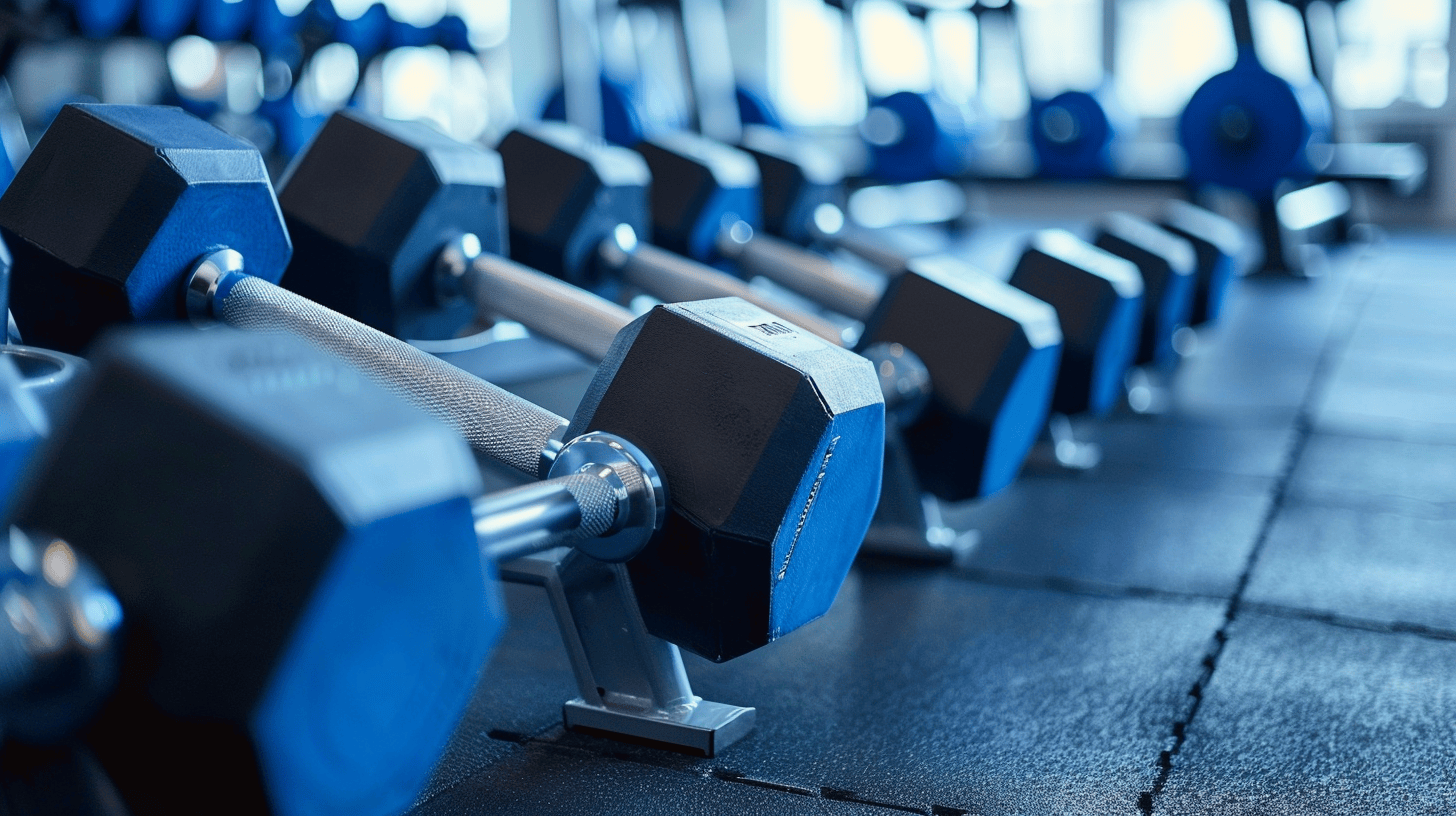Understanding the Basics: Why Establishing a Workout Routine for Beginners is Crucial?
For beginners embarking on their fitness journey, establishing a structured workout routine is not merely a suggestion but a fundamental step towards success. A well-designed workout regimen serves as the cornerstone of progress, providing a roadmap to achieve fitness goals efficiently. But why is it so crucial, especially for beginners?
First and foremost, a consistent workout routine instills discipline and habit formation. By committing to a set schedule, beginners cultivate a sense of accountability, ensuring they prioritize their health and fitness amidst life’s myriad distractions. This consistency lays the groundwork for long-term adherence, essential for sustainable progress.
Moreover, a structured workout routine helps beginners navigate the overwhelming realm of fitness with clarity and purpose. It provides a framework for goal-setting, allowing individuals to outline specific objectives and track their achievements over time. Whether the aim is weight loss, muscle gain, or overall health improvement, a well-defined routine provides direction and motivation.
Beyond physical transformation, establishing a workout routine fosters mental resilience and well-being. Regular exercise has been linked to reduced stress, anxiety, and depression, making it a powerful tool for enhancing mental health. For beginners navigating the complexities of starting a fitness journey, the predictability and routine of regular exercise can offer a sense of stability and control amidst uncertainty.

Furthermore, a structured workout routine ensures optimal progression and prevents injury. Beginners often face the temptation to dive headfirst into intense workouts, risking burnout or injury in the process. A well-designed routine, however, emphasizes gradual progression and includes adequate rest and recovery periods, allowing beginners to build strength and endurance safely.
Exploring Different Types of Workout Routines for Beginners
As beginners venture into the realm of fitness, the sheer variety of workout routines can be overwhelming. From high-intensity interval training (HIIT) to yoga, weightlifting to Pilates, the options seem endless. But amidst this diversity, how does one choose the right workout routine? Let’s delve into the exploration of different types of workout routines tailored specifically for beginners.
Cardiovascular Exercise:
Cardiovascular exercises, such as running, cycling, or swimming, form the cornerstone of many beginner workout routines. These activities elevate the heart rate, improve endurance, and burn calories efficiently. Beginners can start with low-impact options like brisk walking or stationary cycling before gradually progressing to more intense forms of cardio.
Strength Training:
Contrary to common misconceptions, strength training is not solely reserved for seasoned gym-goers. Beginner-friendly strength training routines typically incorporate bodyweight exercises like squats, lunges, and push-ups, gradually introducing resistance training with light dumbbells or resistance bands. Strength training builds muscle mass, boosts metabolism, and enhances overall functional fitness.
Flexibility and Mobility Work:
Often overlooked but equally essential, flexibility and mobility exercises promote joint health, reduce the risk of injury, and enhance overall range of motion. Beginner routines may include dynamic stretches, yoga flows, or mobility drills aimed at improving flexibility, balance, and posture.
Group Fitness Classes:
For beginners seeking structure and guidance in their workouts, group fitness classes offer a supportive environment led by certified instructors. From dance cardio to circuit training, these classes cater to various fitness levels and preferences, providing a fun and social outlet for exercise.
Home Workout Programs:
In the age of digital fitness, home workout programs have surged in popularity, offering convenient and accessible options for beginners. Online platforms and mobile apps feature guided workouts ranging from bodyweight circuits to yoga sessions, allowing individuals to exercise anytime, anywhere, with minimal equipment.
By exploring these diverse options, beginners can find the workout routine that aligns with their goals, preferences, and fitness level. Whether aiming for weight loss, muscle toning, or overall health improvement, there’s a beginner-friendly workout routine out there waiting to be discovered.
Setting Realistic Goals: The Foundation of Your Workout Routine
Establishing achievable and meaningful goals serves as the bedrock of any successful workout routine, especially for beginners. By setting realistic objectives, you not only provide yourself with direction but also ensure that your efforts yield tangible results. Here’s why setting realistic goals is paramount:

Clarity and Focus:
Setting specific, measurable goals provides clarity and focus to your workout routine. Rather than aimlessly engaging in exercise, you have a clear target to work towards, guiding your efforts and keeping you motivated.
Motivation and Accountability:
Realistic goals act as powerful motivators, driving you to stay committed and consistent with your workouts. When you have a clear vision of what you want to achieve, you’re more likely to push through challenges and stay accountable to your fitness journey.
Progress Tracking:
Realistic goals enable you to track your progress effectively. By breaking down larger objectives into smaller, achievable milestones, you can celebrate your successes along the way and stay motivated to continue moving forward.
Preventing Burnout and Injury:
Unrealistic goals can lead to burnout and injury, as pushing yourself too hard too soon increases the risk of overtraining and physical strain. Setting realistic goals ensures that you progress at a pace that is sustainable and safe for your body.
Celebrating Achievements:
Achieving realistic goals provides a sense of accomplishment and boosts your confidence. Each milestone reached becomes a testament to your dedication and hard work, reinforcing your belief in your ability to succeed.
Incorporating Cardiovascular Exercises: Building Endurance and Stamina
Integrating cardiovascular exercises into your workout routine is pivotal for enhancing endurance, stamina, and overall cardiovascular health, especially for beginners. Here’s why incorporating these exercises is essential:
Enhanced Heart Health:
Cardiovascular exercises, such as running, cycling, or swimming, elevate your heart rate, leading to improved cardiovascular function. Over time, regular participation in these activities strengthens the heart muscle, enhances blood circulation, and lowers the risk of heart disease and other cardiovascular conditions.
Increased Endurance:
Engaging in cardiovascular exercises gradually boosts your endurance levels, allowing you to sustain physical activity for longer durations without experiencing fatigue. As you consistently challenge your cardiovascular system, your body becomes more efficient at utilizing oxygen, leading to enhanced endurance and stamina.
Calorie Expenditure and Weight Management:
Cardiovascular exercises are excellent calorie burners, making them an effective tool for weight management and fat loss. By incorporating these activities into your workout routine, you can create a calorie deficit, facilitating weight loss while preserving lean muscle mass.
Improved Lung Function:
Cardiovascular exercises stimulate deeper breathing, promoting better lung function and oxygen exchange. Regular participation in these activities strengthens respiratory muscles, increases lung capacity, and enhances overall respiratory efficiency.
Mental Health Benefits:
Cardiovascular exercises have profound effects on mental well-being, helping to alleviate stress, anxiety, and depression. The release of endorphins during exercise produces feelings of euphoria and relaxation, contributing to improved mood and mental clarity.
Incorporating cardiovascular exercises into your workout routine doesn’t have to be daunting. Begin with activities that you enjoy and gradually increase intensity and duration as your fitness level improves. Whether it’s brisk walking, jogging, cycling, or dancing, finding activities that resonate with you ensures that cardiovascular exercise becomes an enjoyable and sustainable part of your fitness journey.
Strength Training Essentials: Developing Muscle Strength and Tone
Strength training is a fundamental component of any well-rounded workout routine, particularly for beginners aiming to enhance muscle strength and tone. Here’s why it’s essential to incorporate strength training into your regimen:
Muscle Growth and Development:
Strength training involves the use of resistance to stimulate muscle growth and development. By challenging your muscles with progressively heavier weights or resistance, you stimulate muscle fibers to adapt and grow stronger over time.
Improved Metabolic Rate:
Building lean muscle mass through strength training increases your metabolic rate, allowing you to burn more calories at rest. This can be particularly beneficial for beginners looking to lose weight or maintain a healthy body composition.
Enhanced Functional Strength:
Strength training helps improve functional strength, which is essential for performing everyday tasks with ease and efficiency. Whether it’s lifting groceries, climbing stairs, or carrying heavy objects, a strong and resilient musculoskeletal system can enhance overall quality of life.
Injury Prevention:
Strengthening the muscles and connective tissues through resistance training can help reduce the risk of injury during physical activity. By improving joint stability, muscle balance, and movement mechanics, strength training enhances overall musculoskeletal health and resilience.
Improved Bone Density:
Strength training has been shown to increase bone density, reducing the risk of osteoporosis and age-related bone loss. Weight-bearing exercises, such as squats, lunges, and resistance training, stimulate bone remodeling, leading to stronger and more resilient bones.
Incorporating strength training into your workout routine doesn’t necessarily require access to a gym or fancy equipment. Bodyweight exercises, such as push-ups, squats, and lunges, can be performed anywhere and are highly effective for building strength and muscle tone, especially for beginners. As you progress, you can gradually introduce resistance bands, dumbbells, or other forms of resistance to continue challenging your muscles and achieving your fitness goals.

The Importance of Flexibility and Mobility Work: Enhancing Range of Motion
Flexibility and mobility work are often overlooked aspects of a workout routine, yet they play a crucial role in overall fitness and physical well-being, especially for beginners. Here’s why focusing on flexibility and mobility is essential:
Improved Range of Motion:
Flexibility exercises, such as stretching and mobility drills, help increase the range of motion around joints. By regularly engaging in these activities, beginners can enhance flexibility in muscles and connective tissues, allowing for greater freedom of movement and reduced risk of injury during physical activity.
Enhanced Performance:
Greater flexibility and mobility translate to improved athletic performance in various activities. Whether it’s lifting weights, performing yoga poses, or participating in sports, having optimal range of motion allows for smoother and more efficient movement patterns, leading to better performance outcomes.
Injury Prevention:
Flexibility and mobility work play a significant role in injury prevention by reducing the likelihood of muscle strains, joint sprains, and other musculoskeletal injuries. Maintaining adequate flexibility in muscles and joints helps distribute forces more evenly during movement, minimizing the risk of overloading tissues and causing damage.
Reduced Muscle Tension and Discomfort:
Stretching and mobility exercises can alleviate muscle tension and discomfort, particularly after periods of prolonged sitting or physical inactivity. These activities help relieve tightness in muscles, improve circulation, and promote relaxation, leading to greater overall comfort and well-being.
Enhanced Posture and Body Alignment:
Poor flexibility and mobility can contribute to postural imbalances and alignment issues, leading to discomfort and increased risk of injury. By incorporating exercises that target flexibility and mobility, beginners can address muscular imbalances, improve posture, and maintain optimal body alignment for better overall health and function.
Incorporating flexibility and mobility work into your workout routine doesn’t have to be time-consuming or complicated. Simple stretching exercises, yoga flows, and mobility drills can be performed regularly to reap the numerous benefits of improved flexibility and range of motion. Whether as part of a warm-up, cool-down, or dedicated mobility session, prioritizing flexibility and mobility will contribute to a healthier, more resilient body over time.
Tailoring Your Workout Routine to Your Fitness Level
Adapting your workout routine to suit your current fitness level is essential for ensuring progress, preventing injury, and maintaining motivation, especially for beginners. Here’s how to tailor your workouts effectively:
Assess Your Current Fitness Level:
Before designing your workout routine, take stock of your current fitness level, including your strength, endurance, flexibility, and mobility. This assessment will provide valuable insights into areas where you may need to focus and where you can safely challenge yourself.
Start Slow and Gradually Progress:
For beginners, it’s crucial to start with workouts that are manageable and gradually increase intensity and volume over time. Begin with low-impact exercises and lighter weights, focusing on proper form and technique before advancing to more challenging movements or heavier loads.
Listen to Your Body:
Pay attention to how your body responds to exercise and adjust your workouts accordingly. If you experience pain or discomfort, scale back the intensity or modify the exercise to suit your needs. Push yourself to work hard, but also know when to give yourself grace and rest as needed.
Incorporate Variety and Progression:
Keep your workouts engaging and effective by incorporating a variety of exercises and training modalities. Include elements of cardiovascular exercise, strength training, flexibility work, and mobility drills to develop a well-rounded fitness routine. As you become more comfortable with your workouts, progressively increase the challenge by adding more repetitions, increasing resistance, or trying new exercises.
Set Realistic Goals:
Establish realistic and achievable goals based on your current fitness level and desired outcomes. Whether it’s increasing strength, improving endurance, or losing weight, setting specific, measurable goals will help you stay focused and motivated throughout your fitness journey.
Seek Professional Guidance if Needed:
If you’re unsure how to tailor your workout routine to your fitness level or have specific health concerns or limitations, consider seeking guidance from a certified personal trainer or fitness professional. They can provide personalized recommendations and modifications to ensure your workouts are safe, effective, and aligned with your goals.
By tailoring your workout routine to your fitness level, you can maximize your progress, minimize the risk of injury, and enjoy a rewarding and sustainable fitness journey. Remember to be patient with yourself, stay consistent, and celebrate your achievements along the way.
Designing a Beginner-Friendly Workout Routine

Embarking on a fitness journey can be exhilarating yet overwhelming, especially for beginners. Establishing a workout routine tailored to your needs and capabilities is crucial for long-term success and enjoyment. In this guide, we’ll delve into the essential steps to design a beginner-friendly workout routine that promotes progress while minimizing the risk of injury or burnout.
Creating a Balanced Workout Schedule: Weekly Planning for Success
One of the key aspects of designing a workout routine is establishing a balanced schedule that targets different muscle groups while allowing for adequate rest and recovery. Begin by planning your workouts for the week, aiming for consistency without overexertion.
A well-rounded schedule typically includes a mix of cardiovascular exercise, strength training, flexibility work, and rest days. For beginners, it’s advisable to start with three to four workout sessions per week, gradually increasing intensity as your fitness level improves.
Choosing Suitable Exercises: Low-Impact Options for Beginners
Selecting appropriate exercises is paramount, particularly for beginners who may be unfamiliar with proper form or have limitations due to past injuries or health conditions. Opting for low-impact exercises reduces strain on joints and minimizes the risk of injury, making them ideal for beginners.
Cardiovascular exercises like brisk walking, cycling, or swimming provide an excellent foundation for improving cardiovascular health and burning calories. Strength training exercises using bodyweight or light resistance, such as squats, lunges, push-ups, and planks, help build muscle strength and endurance without overwhelming beginners.
Incorporating flexibility exercises like yoga or stretching routines enhances mobility and reduces the risk of stiffness or injury. Remember to progress gradually, focusing on mastering proper technique before increasing intensity or adding more challenging exercises.
Incorporating Rest and Recovery: Balancing Exercise and Rest
One of the most overlooked aspects of a workout routine is rest and recovery. Allowing your body time to recuperate is essential for preventing burnout, reducing the risk of overuse injuries, and promoting muscle growth and repair.
Integrate rest days into your weekly schedule to give your body a chance to recover and recharge. These days are just as important as workout days and should be treated with the same level of intentionality. Use rest days to engage in active recovery activities like gentle stretching, foam rolling, or leisurely walks to promote blood flow and alleviate muscle soreness.
Additionally, prioritize sleep and nutrition to support your fitness goals. Aim for seven to nine hours of quality sleep per night and fuel your body with a balanced diet rich in whole foods, lean proteins, complex carbohydrates, and healthy fats.
Tips for Sustaining Motivation and Consistency
Embarking on a fitness journey is exhilarating, but sustaining motivation and consistency can pose significant challenges. However, with the right strategies in place, you can overcome obstacles and stay committed to your goals. In this article, we’ll explore key tips for sustaining motivation and consistency in your fitness journey.
Setting Realistic Expectations: Celebrating Small Victories in Workout Routine for Beginners
One of the most effective ways to sustain motivation is by setting realistic expectations and celebrating small victories along the way. Instead of focusing solely on long-term goals, break them down into manageable milestones. Whether it’s increasing the duration of your workout, lifting heavier weights, or improving your flexibility, acknowledging and celebrating these achievements boosts confidence and keeps you motivated to continue.
By recognizing progress, no matter how small, you cultivate a sense of accomplishment that fuels your desire to push forward. Remember, every step forward, no matter how small, brings you closer to your ultimate goals.
Finding Enjoyment in Exercise: Exploring Activities You Love
Another vital aspect of sustaining motivation is finding enjoyment in exercise. Engage in activities that you genuinely love and look forward to. Whether it’s dancing, hiking, playing sports, or practicing yoga, discovering activities that bring you joy makes it easier to stay consistent with your workouts.
Experiment with different types of exercise until you find what resonates with you. Not only does this make your workouts more enjoyable, but it also increases the likelihood of sticking to your routine in the long run. Additionally, consider enlisting the company of friends or joining group classes to make exercise a social and fun experience.
Accountability and Support: Engaging with Fitness Communities

Maintaining accountability and seeking support from others can significantly impact your motivation and consistency. Joining fitness communities, whether online or in-person, provides a sense of belonging and encouragement on your fitness journey.
Accountability partners or workout buddies can help keep you on track by providing motivation, encouragement, and support. Share your goals with trusted friends, family members, or online communities, and regularly check in with them to update on your progress and challenges.
Moreover, participating in group fitness classes or challenges fosters a sense of camaraderie and shared accomplishment. Knowing that others are counting on you can serve as a powerful motivator to stay consistent with your workouts.
In conclusion, sustaining motivation and consistency in your fitness journey requires setting realistic expectations, finding enjoyment in exercise, and seeking support from others. By celebrating small victories, exploring activities you love, and engaging with fitness communities, you can overcome obstacles and stay committed to achieving your goals.
Conclusion: Embarking on Your Fitness Journey with the Perfect Workout Routine
In conclusion, establishing a workout routine tailored to your needs and capabilities is the cornerstone of a successful fitness journey, especially for beginners. By incorporating a balanced schedule, suitable exercises, and ample rest and recovery, you lay the foundation for sustainable progress and enjoyment. Setting realistic expectations, finding enjoyment in exercise, and seeking support from others are key strategies for sustaining motivation and consistency.
As you embark on your fitness journey, remember that progress takes time, and every step forward, no matter how small, is worth celebrating. Whether it’s increasing your endurance, building strength, or improving flexibility, each achievement brings you closer to your ultimate goals. By staying committed to your workout routine, embracing challenges, and staying open to new experiences, you’ll not only transform your body but also cultivate a lifelong commitment to health and well-being. So lace up your shoes, roll out your mat, and embark on this journey with confidence, knowing that you have the perfect workout routine to guide you every step of the way.
